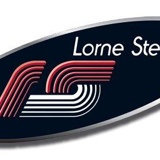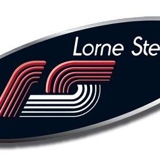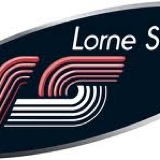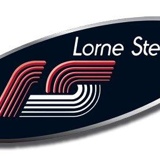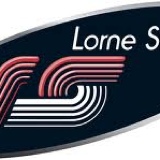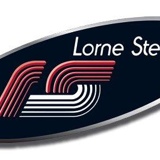Information
Catering Audit Checklist (CRPIWT)
-
Location:
-
Person(s) present during the audit:
-
Date:
-
Audit No.
-
Person(s) completing the audit:
Scope of Works
-
Description (services provided, staff levels, hours of work etc)
1.0 Health and Safety
-
1-1. H&S Manual available on site<br><br>Are managers familiar with its content and employees aware of the document?
-
Additional notes / sketches
-
Add drawing
-
1-2. Quality Manual available on site<br><br>Are managers familiar with its content and employees aware of the document?
-
Additional notes / sketches
-
Add drawing
-
1-3. Risk Assessments available on site<br><br>Risk assessments for all work activities undertaken.
-
Additional notes / sketches
-
Add drawing
-
1-4. HACCP plans available
-
Additional notes / sketches
-
Add drawing
-
1-5. Health and Safety Policy/Safety declaration
-
Additional notes / sketches
-
Add drawing
-
1-6. Certificate of Employers Liability Insurance
-
Additional notes / sketches
-
Add drawing
-
1-7. Accident book and procedures available
-
Additional notes / sketches
-
Add drawing
-
1-8. Relevant statutory notices displayed
-
Additional notes / sketches
-
Add drawing
-
1-9. Toolbox talks delivered<br><br>Records maintained.
-
Additional notes / sketches
-
Add drawing
-
1-10. Fire safety precautions and arrangements adequate<br><br>Fire risk assessment in place. fire extinguishers of the correct type and inspected annually.
-
Additional notes / sketches
-
Add drawing
-
1-11. Appropriate arrangements in place with regard to manual handling<br><br>Risk assessment in place. Manual handling aids available where required e.g. sack barrows, pallet trolleys etc.
-
Additional notes / sketches
-
Add drawing
-
1-12. Slips, trips and falls<br><br>Housekeeping good, suitable measures taken to reduce the potential for slips, trips and falls.
-
Additional notes / sketches
-
Add drawing
-
1-13. First aid<br><br>Adequate first aid provision available.
-
Additional notes / sketches
-
Add drawing
-
1-14. PPE<br><br>Suitable personal protective equipment available and being used.
-
Additional notes / sketches
-
Add drawing
-
1-15. Machinery and Equipment<br><br>Defective equipment taken out of service and arrangements made for repair as soon as possible. SF327 (Equipment Defects Record) completed. Weekly safety monitoring checks carried out.
-
Additional notes / sketches
-
Add drawing
-
1-16. Gas and Electrics<br><br>Damaged/defective equipment attended to as a priority and taken out of service to prevent re-use. SF327 (Equipment Defects Record) completed. Weekly safety monitoring checks carried out.
-
Additional notes / sketches
-
Add drawing
-
1-17. Sharps/knives safety<br><br>Correct procedures for knife cleaning/storage are being used. Broken glass to be cleaned up immediately.
-
Additional notes / sketches
-
Add drawing
2.0 Food Safety
-
2-1. Shield yourself kitchen diaries available on site<br><br>Are managers familiar with its content and employees aware of the document?
-
Additional notes / sketches
-
Add drawing
-
2-2. Shield yourself diary<br><br>Diary to be maintained and signed off each week by manager.
-
Additional notes / sketches
-
Add drawing
-
2-3. Fridge/freezer temp records kept up to date in kitchen diary<br><br>Have the fridge freezer temperatures been recorded twice daily and has action been taken for temperature readings outside the tolerance?
-
Additional notes / sketches
-
Add drawing
-
2-4. Food temperature core and service temperature of food kept updated in kitchen diary<br><br>Has the temperature of the food been recorded?
-
Additional notes / sketches
-
Add drawing
-
2-5. Probe temperature calibration form updated in kitchen diary<br><br>Have the food probes been calibrated monthly?
-
Additional notes / sketches
-
Add drawing
-
2-6. Training<br><br>Have all catering staff been trained to Foundation Food/Level 1 Hygiene qualification level? Are their certificates on file? Is training recorded on form SF30?
-
Additional notes / sketches
-
Add drawing
-
2-7. Food Separation<br><br>Is the raw food i.e. meat, prepared away from the cooked food?
-
Additional notes / sketches
-
Add drawing
-
2-8. Customer feedback<br><br>Is feedback obtained from the customers? I.e. customer questionnaires? Emails.
-
Additional notes / sketches
-
Add drawing
-
2-9. Cleaning, kitchen hygiene, cleaning schedule kept updated in kitchen diary<br><br>Have the daily, weekly and monthly cleaning task sheets been completed? Does the kitchen and equipment, including fridge and freezers, look clean with no evidence of a build of grease?
-
Additional notes / sketches
-
Add drawing
-
2-10. Cleaning products/COSHH/chemical handling assessments<br><br>Do all cleaning products have a product safety data sheet and COSHH assessment?
-
Additional notes / sketches
-
Add drawing
-
2-11. Uniforms/personal hygiene<br><br>Do all catering staff have the appropriate uniform i.e. safety shoes, overall, hat? Are nails free of nail varnish and rings other than wedding rings? Is hair tied back?
-
Additional notes / sketches
-
Add drawing
-
2-12. Storage of raw and dry goods<br><br>Is all stock kept in appropriate conditions to prevent harmful deterioration and to protect them from contamination? I.e. clean store and away from cleaning chemicals and pesticides, adequate ventilation, non absorbent shelving and off the floor.
-
Additional notes / sketches
-
Add drawing
-
2-13. Storage of raw meat<br><br>Is raw meat on the bottom of the fridge or separate from cooked foods and securely covered or wrapped to prevent cross contamination?
-
Additional notes / sketches
-
Add drawing
-
2-14. Stock rotation<br><br>Is there a suitable system for stock rotation i.e. older foods are used first to avoid spoilage? Check stock sheets to ensure minimum stock levels and good stock rotation is maintained.
-
Additional notes / sketches
-
Add drawing
-
2-15 . Food - short shelf life (High Risk)<br><br>Are foods with a short shelf life labelled with a USE BY date?
-
Additional notes / sketches
-
Add drawing
-
2-16. Approved suppliers<br><br>Are we using approved suppliers where possible?
-
Additional notes / sketches
-
Add drawing
-
2-17. Food delivery record kept updated in kitchen diary<br><br>Has the delivered food been checked that it is free from contaminants and packaging intact and recorded on Goods Inspection Record.
-
Additional notes / sketches
-
Add drawing
-
2-18. Home produced food<br><br>Is the food clearly and correctly labelled with the date of freezing?
-
Additional notes / sketches
-
Add drawing
-
2-19. Cross contamination<br><br>Are coloured chopping boards being used to prevent cross contamination?
-
Additional notes / sketches
-
Add drawing
-
2-20. Pest control<br><br>Pest control contract in place and records available.
-
Additional notes / sketches
-
Add drawing
-
2-21. UV insectocutors<br><br>Are UV insectocutors and fly screens provided in the kitchens and food storage areas operational, intact and emptied regularly?
-
Additional notes / sketches
-
Add drawing
-
2-22. Waste<br><br>Kitchen refuse containers must prevent waste spillage and be placed in a position that does not lead to contamination of surfaces, food equipment or staff clothing. Has raw meat and fish been disposed of correctly?
-
Additional notes / sketches
-
Add drawing
-
2-23. Cooking oils<br><br>Are BEFM owned/managed cooking oils, both new and used, being stored in a bunded area (large quantities) and in a safe location so as to avoid pollution to drains and land?
-
Additional notes / sketches
-
Add drawing
Site Tour
-
Safety Observation
-
Location:
-
Safety Observation:
-
Additional notes / sketches
-
Add drawing






